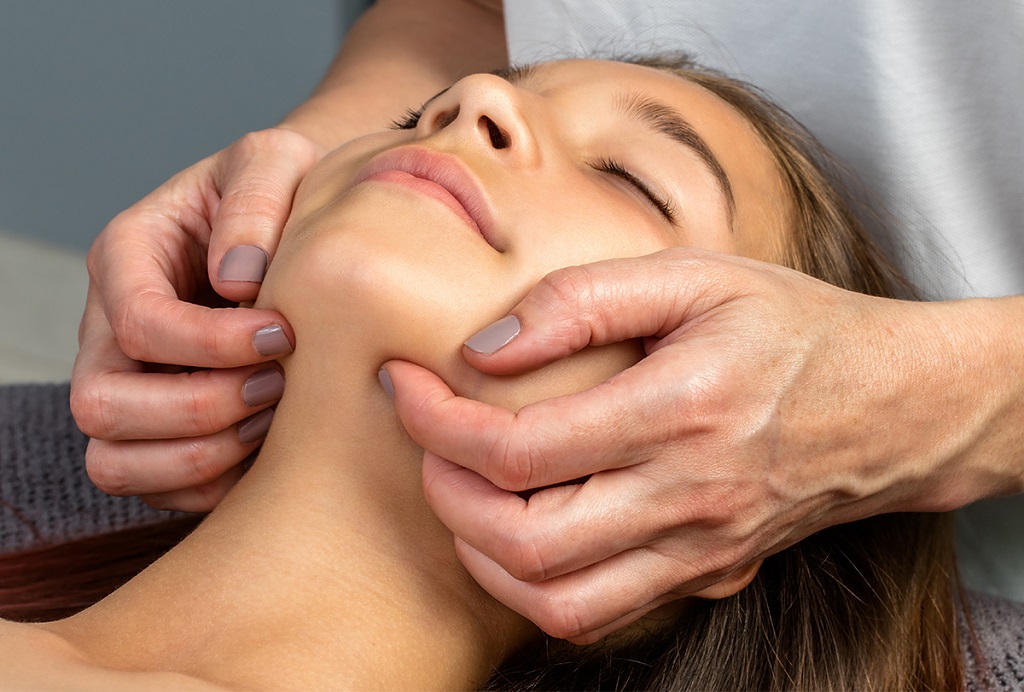
22 Nov 5 DIY Techniques for Managing TMJ Disorder Pain
Most people don’t have much cause to figure out where the temporomandibular joint (TMJ) is – just so you know, it is the joint that connects your mandible and your temporal bone, and it allows your jaw to open and close. Of course, if you suffer from a TMJ disorder, you have likely become all too familiar with the location of this joint for the simple fact that it probably causes you quite a bit of pain or makes it difficult to eat, speak, and carry out the basic functions attributed to a working jaw. In some cases, TMJ disorders can be treated or even cured with medication, surgery, or other therapies. Sometimes they disappear over time. But it’s not always clear what causes these disorders and they’re not always curable. And if you’re not keen on taking pain medication, you might be looking for DIY options that allow you to cope with the pain on your own.
Here are some options you might want to discuss with your doctor and/or dentist.
Bite guard.
Technically, a bite guard is something you’ll have to get your dentist to make specifically for your mouth, and it could cost several hundred dollars if your insurance doesn’t cover it. But it’s your job to wear it as recommended so as to treat the pain related to your particular TMJ disorder. And since it is one of the very best ways to treat a variety of TMJ disorders, it bears inclusion under DIY treatment options. Many people with TMJ disorders experience neck and ear pain, as well as headaches in addition to the pain in their jaw. And a bite guard (often worn only at night) can help to relieve pain in all of these areas. But the onus is on you to use it as directed by your dentist. So in terms of DIY, having the bite guard isn’t nearly as important as deciding to use it.
Heat.
TMJ disorders often lead to muscle pain, and the application of heat can help to loosen and relax muscles, as well as increase blood flow to the site. Both of these outcomes can lead to pain relief and healing. So whether you apply a warm compress or you use a heating pad, you may be able to supplement or maximize other pain management techniques with the inclusion of heat.
Massage.
Massage therapy is indicated for the treatment of many different types of injury, aches, and pains, and TMJ disorders are no exception. Studies have shown that massage not only helps to relieve the pain associated with many TMJ disorders, but it can also reduce the occurrence of clenching and grinding that may be related to (or exacerbate) these conditions. And you can definitely learn some massage techniques to practice at home by speaking to a specialist or looking for tutorials from qualified sources online.
Stretching.
Jaw exercises, which mainly include a variety of stretching techniques, can definitely help you to manage the pain associated with TMJ disorders. You may want to consider consulting with your doctor or a physical therapist in order to master this type of exercise. But from there you should be able to practice on your own.
Relaxation.
No matter what treatment for TMJ pain you choose, you may find that relaxation techniques can act in a supplement capacity. Although stress is not the cause of TMJ disorder, it can certainly contribute to the problem, making the pain you suffer even worse. So whether a specialist at Windermere Dental Group supplies you with a bite guard or your doctor sends you for physical therapy, you might want to consider adding meditation, yoga, or even acupuncture to your regular routine as a way to reduce stress and better manage TMJ pain.


Sorry, the comment form is closed at this time.